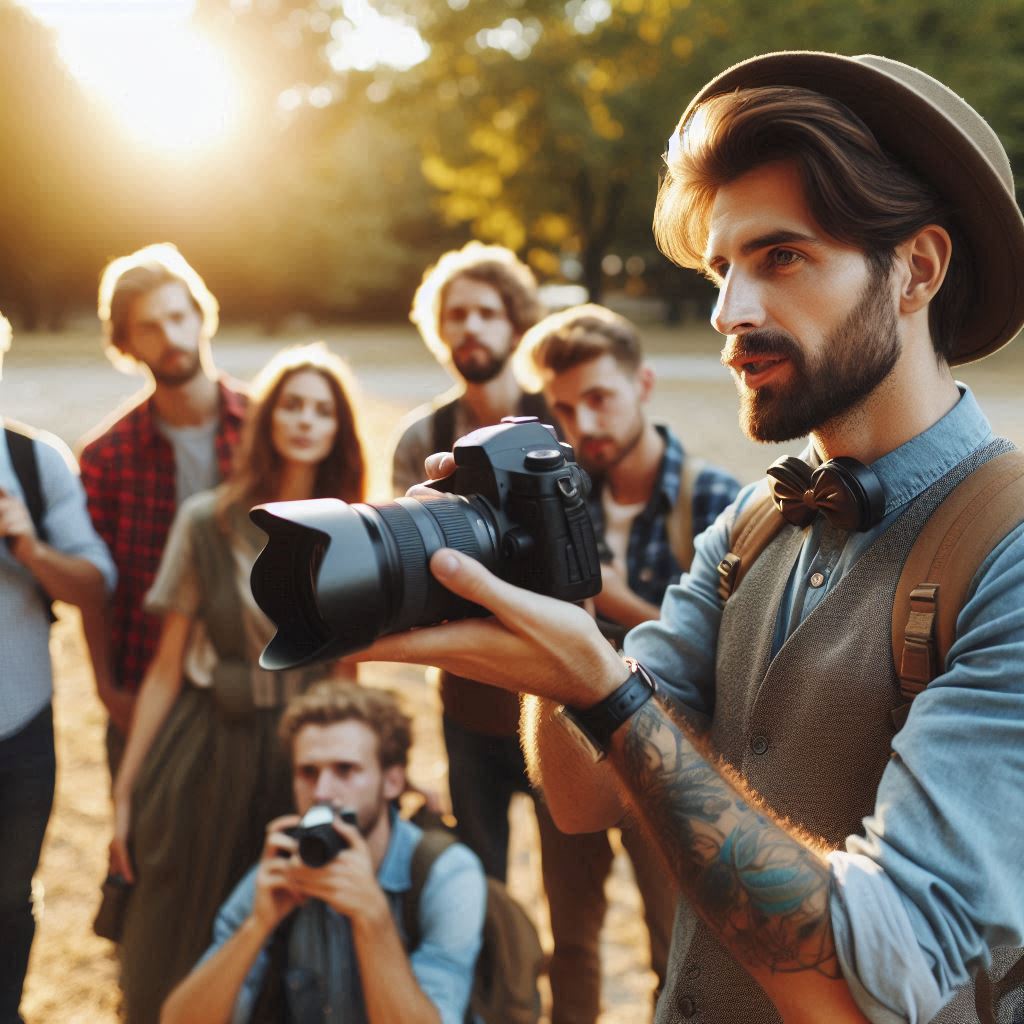100 Photography Tips: Master Your Craft
11. Incorporate Patterns and Textures
Explanation:
Patterns and textures add visual interest to your images, making them more engaging.
Example:
Capture the intricate patterns on a leaf or the texture of a brick wall.
Assignment:
Take close-up shots of various textures in your environment, focusing on light and shadow.
12. Focus on Eyes in Portraits
Explanation:
Sharp focus on the eyes creates a connection between the subject and the viewer.
Example:
Use a wide aperture to blur the background while ensuring the eyes are in sharp focus.
Assignment:
Capture five portraits, ensuring the eyes are always the focal point. Compare the emotional impact of each.
13. Take Advantage of the Golden Hour
Explanation:
The golden hour occurs shortly after sunrise and before sunset when the light is soft and golden, providing ideal conditions for photography.
Example:
Photograph landscapes or portraits during this time for flattering light.
Assignment:
Plan a photo shoot during the golden hour and compare your results to those taken in harsh midday light.
14. Experiment with HDR Photography
Explanation:
High Dynamic Range (HDR) photography combines multiple exposures to capture a wider range of light, ideal for high-contrast scenes.
Example:
Photograph a sunset with three shots at different exposures and merge them in post-processing.
Assignment:
Create an HDR image from a scene with high contrast, comparing it to a standard shot.
15. Capture Candid Moments
Explanation:
Candid photography captures spontaneous moments, revealing authentic emotions.
Example:
Document a child’s reaction while playing or interacting with others.
Assignment:
Spend a day capturing candid moments in a public place, focusing on expressions and interactions.

16. Utilize Color Theory
Explanation:
Understanding color relationships can enhance your compositions and evoke emotions. Complementary colors can create striking contrasts.
Example:
A vibrant red flower against a green background can create an eye-catching image.
Assignment:
Create a series of images showcasing different color combinations, experimenting with harmony and contrast.
17. Create Beautiful Bokeh
Explanation:
Bokeh refers to the quality of the out-of-focus areas in a photo, adding artistic flair and emphasizing the subject.
Example:
Photograph holiday lights with a shallow depth of field to create a pleasing bokeh effect.
Assignment:
Experiment with different backgrounds and light sources to achieve unique bokeh effects in your images.
18. Master White Balance
Explanation:
White balance adjustments can dramatically affect the mood and tone of your photos, making colors appear more natural.
Example:
Use a warmer setting for indoor shots with artificial light to avoid bluish tones.
Assignment:
Take the same photo with various white balance settings and compare the results.
19. Use Filters Wisely
Explanation:
Filters can enhance or alter your images. Common types include polarizing filters to reduce glare and neutral density (ND) filters to allow for longer exposures.
Example:
A polarizing filter can enhance the color of the sky and reduce reflections on water.
Assignment:
Experiment with at least two types of filters and evaluate their effects on your images.
20. Utilize a Tripod
Explanation:
A tripod stabilizes your camera, ensuring sharper images, especially in low light or long exposure situations.
Example:
Always use a tripod for night photography or landscape shots with slow shutter speeds.
Assignment:
Take a series of photos with and without a tripod, comparing sharpness and clarity.
